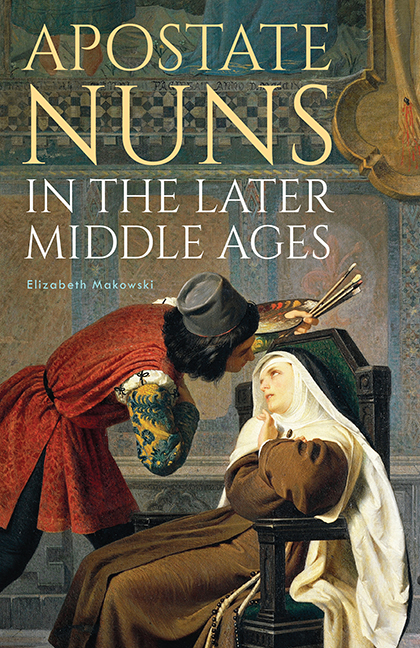Summary
Even a modest survey of case studies, such as the one just concluded, demonstrates how inadequately the popular trope of the wayward nun reflects historical reality. The individuals seen here left their monasteries for a striking variety of reasons, utilized any number of different means to do so, and frequently sought to return, penitent, to those same communities. Neither uniformly venal and lustful, nor categorically victimized, some apostates were reluctant renegades set adrift by war and disaster, lapses in judgment, or religious reforms that consigned them to a life much more rigorous than they had ever promised to live. Some broke with the vowed life suddenly, others strayed from it by degrees. Those who returned, voluntarily or under duress, could suffer at the hands of former superiors and fellow religious, or they could feel the joy of reconnection even while undergoing condign punishment.
Some runaway nuns, like Katherina Truchessen, had been bullied into the cloister by their fathers, and others had been coerced by greedy brothers or cousins, as was the case with the heiress, Magdalena Payerin. Some nuns were seduced and then abandoned, others found lovers like Fra Lippi, who treated them fully as spouses. Alleged apostates often found in their husbands the support they needed to finally seek exoneration – witness the skill that Friedrich Heidenheimer, notary, scribe in the court of the bishop of Constance, and the man that Magdalena of Münsterlingen had married, brought to her process. Penitent apostates might be treated with cold indifference by clerics charged with their reintegration or they might find themselves in the hands of shepherds like Johannes Busch, who seemed almost in awe of his elite charges.
But as diverse as they were individually, all the women we have encountered here were a product of their time. The choices that they made (or that were made for them), and the options that they subsequently exercised, were colored by the changing, challenging era in which they all lived. Placing these women in historical context helps us to understand their individual actions, as well as to assess those of the ecclesiastical officials tasked with the regulation of monastic communities. While major crises of the late Middle Ages – famine, war, and plague – affected lay and religious, male and female alike, even these natural and man-made disasters sometimes had a distinctive impact on religious women.
- Type
- Chapter
- Information
- Apostate Nuns in the Later Middle Ages , pp. 183 - 200Publisher: Boydell & BrewerPrint publication year: 2019

